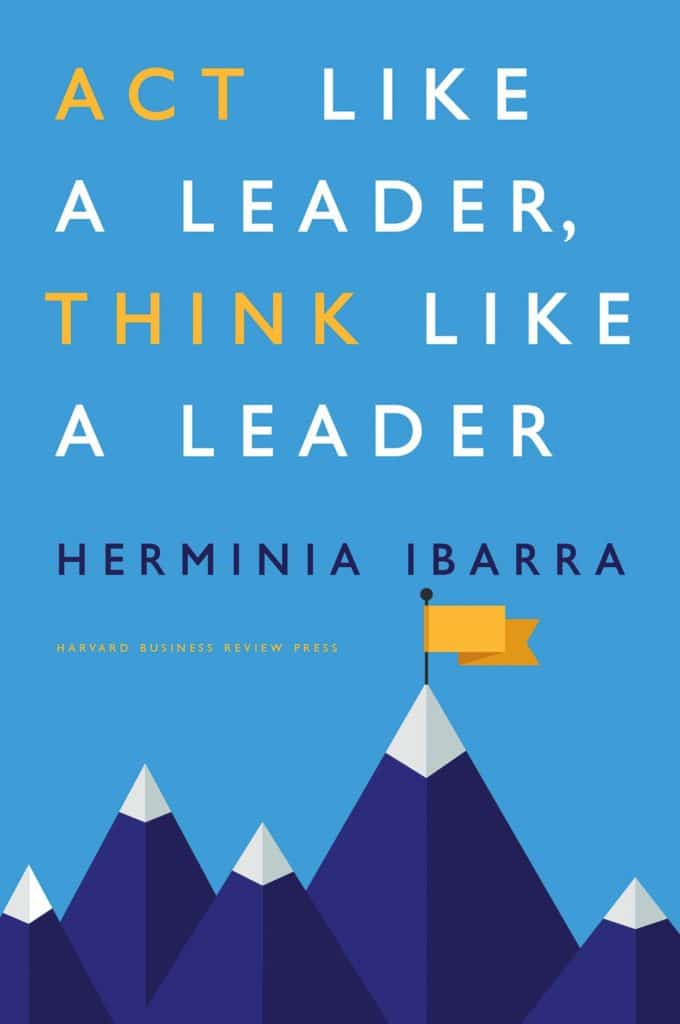
How to be a good leader – Why what you know may be wrong!
How to be a good leader? Have you wondered about that? What you know about how leaders become leaders may be wrong! According to the research by Herminia Ibarra, most traditional ways of leadership development have an incorrect approach!
Read further to find out more.
How to be a good leader? A perpetual leadership development problem
Jacob is one of the leaders and production head of a food manufacturer. He complains that most of his day is filled with fighting fires. He runs around the plant all day, just trying to fix things to meet the production targets and keep the plant running. He realizes that he needs to get away from operational issues and focus more on strategic issues. How to improve the plant’s efficiency, how to improve cross-functional collaboration, how to anticipate threats, and take advantage of possible opportunities in a rapidly changing business environment. His solution to this pressing problem is to find a two-hour time slot in his day to think. And it seems like a good idea. After all, having some time to think and reflect will help take a more strategic view.
Perhaps you are in a similar position as Jacob in your leadership role. Maybe you are trying to wean yourself from operational issues and focus more on strategic initiatives. You want to tackle more important matters that suffer due to non-stop urgent issues. Does this solution – to set aside time to think – work? Is it likely to make Jacob, or your own self, more strategic? Almost certainly no! Unfortunately, you can only learn leadership by doing things and not by thinking about things.
Real-life experiences from a leadership development expert on how to be a good leader
This perspective comes from Herminia Ibarra, the author of the book Act like a leader, think like a leader, and an expert on professional and leadership development. She is a professor at London Business School. Previously she was a Professor of Leadership and Organizational Behavior at INSEAD. She also served as Harvard Business School faculty for thirteen years. Thinkers50 ranked Ibarra #9 among the most influential business gurus in the world.
Read: Future of Leadership – Are your leadership skills future-ready?

How to be a good leader? Why won’t the conventional wisdom on leadership get you very far?
The approach that most leadership training or coaching programs take is changing the leader’s thinking. It is usually done through self-reflection and introspection. Herminia Ibarra points out that an entire industry on leadership development is based on this faulty idea. Books, training programs, coaching interventions, and courses are designed to help find your authentic leadership style and help you become an authentic leader. The numbers on the effectiveness of such leadership programs are shockingly dismal.
Such programs may help you identify your leadership strengths and weaknesses, but that is exactly what may be the problem – as that only describes your current way of thinking. What is needed is a change in mindset, which a behavior change can only achieve.
“It’s easier to act your way into a new way of thinking than think your way into a new way of acting.” – Jerry Sternin.
Change happens from the outside in and not from the inside out. In other words, we act as a leader first and then learn to think like a leader (thus the title of the book).
How leadership growth really happens?
Throughout her career, Professor Ibarra observed how leaders dealt with important transitions at work. Most of what she learned about successful leadership transitions goes against conventional wisdom.
The traditional approach to leadership development is to identify authentic, innovative, or inspiring leaders and then to identify what they have in common. Researchers conclude that effective leaders have certain competencies – high self-awareness, a sense of purpose, authenticity, and so on. However, there is little understanding of the journey of how leaders got there. She concluded people become leaders by doing the real leadership work – not by attending leadership training or coaching programs.
Becoming a leader: the traditional model (think, then act) versus the way it really works (act, then think)

She coined this “reverse” cycle of first acting as a leader and then thinking like a leader as “outsight” – as it is a change from outside in vs. the traditional approach of change from the inside out or “insight.” Below are some differences between insight and outsight.
The difference between insight and outsight
Insight Outsight
- Internal Knowledge – External Knowledge
- Past Experience – New Experience
- Thinking – Acting
How do you approach your leadership development?
Many companies go about leadership development traditionally by sending leaders and potential leaders to executive education programs or leadership training and coaching. There are several pitfalls to this approach.
- Considering leadership training as an event – Not understanding that it is a process that takes time and reinforcement at work.
- Overlooking the context – What works in one situation or environment won’t work in other situations.
- Decoupling of reflection from the real work – Developmental activities look good in a simulated environment but not in the real world.
To quote Debbie Lovich, who has 20 years of experience in leadership development BCG, “People don’t develop skills from simply reading a book or going to a one-off workshop. They build skills by having to do something, failing, and trying again and again.“
Read: Why leadership training fails and the fail-safe solution for it
The fundamental problem with leadership development
The fundamental problem with most of the traditional leadership development and executive education programs is that they assume that if the leader knows about it, she will do it. We know from personal experience – how flawed this kind of thinking is. Knowing rarely equals doing. We know a lot about many areas. For example, I know a lot about losing weight and getting fit. Does that mean that I do those things regularly? This rarely is the case. Think about any of the leadership skills. You may attend a course on “Working with Emotional Intelligence.” Does that mean that you will apply it regularly and become more emotionally intelligent when you come back to work? I am willing to bet that it rarely happens!
A flawed paradigm about how to be a good leader
And yet, we operate under a flawed paradigm that more knowledge will help fix the leadership issues. We chase the latest program, the latest buzzword, the newest bestseller – thinking that if I just read that or attend the course – I can improve my leadership. Intellectual knowledge is rarely a problem in leadership development. Application of the knowledge at work, consistent follow-up, and forming the right habits is definitely is the issue.
Our leadership coaching is designed to convert knowing into doing. We take the leader through awareness, acceptance, action, and achievement (of their leadership growth). The model we use is tried and tested worldwide – over 1 million leaders have undergone this process. Large-scale research study of over 84,000 leaders on six continents has proven this approach to have a success rate of 95% – which is unheard of in training and coaching. And best of all – it comes with a no-growth no-pay clause.
Want to know about a better and more cost and time-effective approach to leadership development?
Would you like measurable results from your leadership development investment? How about guaranteed results? We use the Stakeholder centered one on one coaching for leaders pioneered by Dr. Marshall Goldsmith – World’s No. 1 leadership Thinker and executive coach. This leadership development approach overcomes most of the pitfalls that derail the effectiveness of a leadership development initiative.
NAL Triple Advantage Leadership Coaching
That delivers guaranteed and measurable leadership growth. It is based on a stakeholder-centered coaching process with a 95% effectiveness rate (in a study of 11000 leaders on 4 continents). It is used by companies ranging from startups to 150 of the Fortune 500 companies to develop their leaders.
Here are some of the salient benefits of NAL Triple Advantage Leadership Coaching
Time and resource-efficient: The leader does not have to leave work to attend training programs. We go to the leader and her team. And it only takes 1.5 hours per month. The rest of the time, the leader is working to implement with her team.
Separate and customized improvement areas for each leader: Every leader is different. One size fits all approach doesn’t work. Individual development areas for each leader are aligned to the business strategy.
Involves entire team: Unlike most leadership programs, NAL Triple Advantage Leadership Coaching involves the leader’s entire team, and it has a cascading effect – increasing the team effectiveness and improving organizational culture.
The leader becomes the coach: for continuous improvement for leaders themselves and their teams. It is like kaizen for your leadership development.
Cost-Effective: Our entire one-year coaching engagement often costs less than sending the leader to a short-duration leadership program at any reputed B school.
Guaranteed and measurable leadership growth: as assessed – not by us – but anonymously rated by the leader’s own team members.
Pay us only after we deliver results!: We work with many of our clients on a pay for results basis. What does it mean? If the leaders don’t improve, you don’t have to pay us.
Schedule an exploratory 15-minute conversation with our leadership adviser today
Click the button below.
References: “Act like a leader, think like a leader,” a book by Herminia Ibarra.


